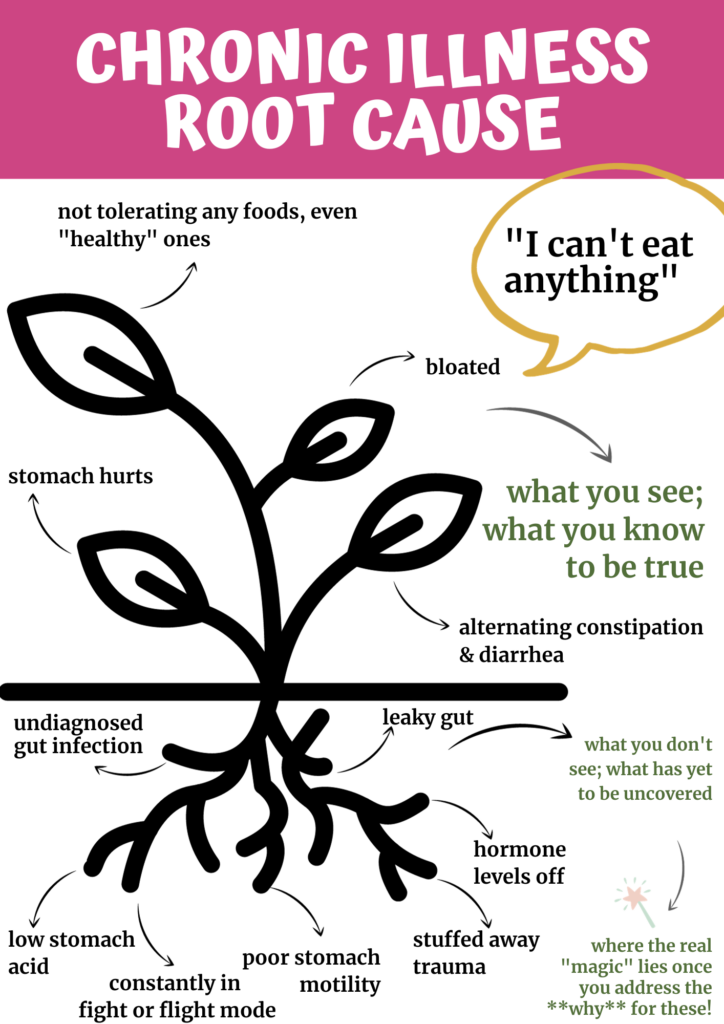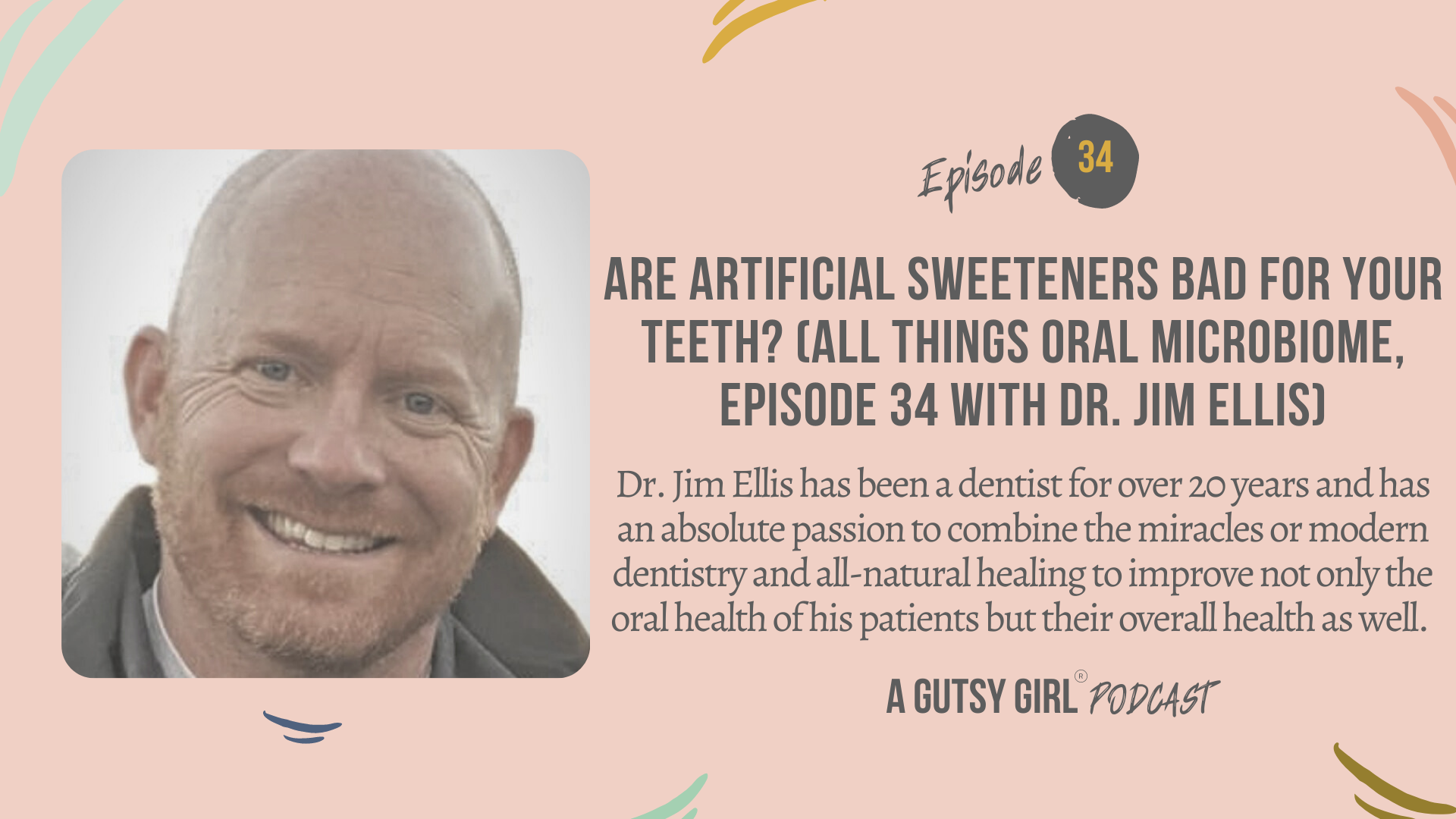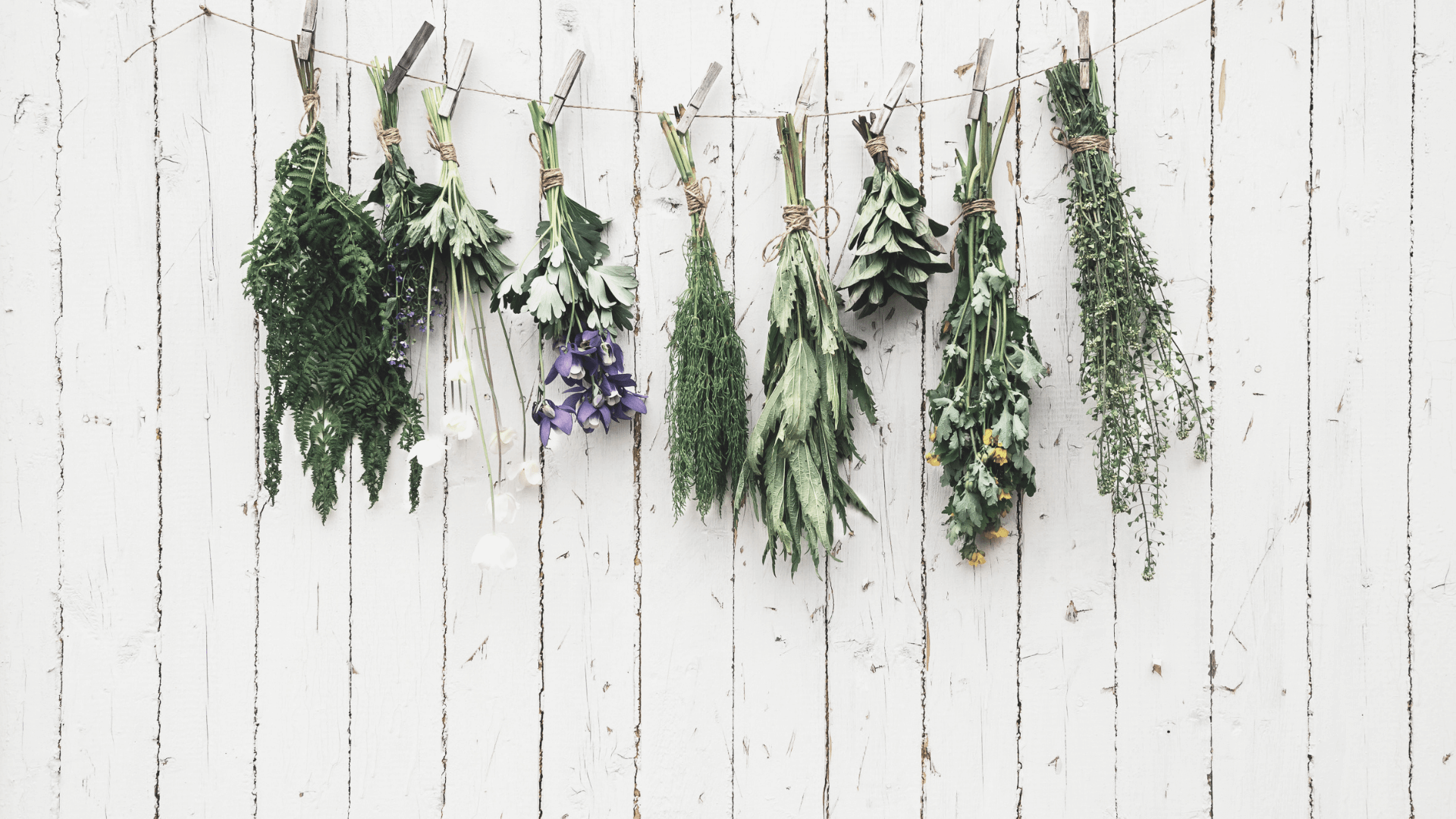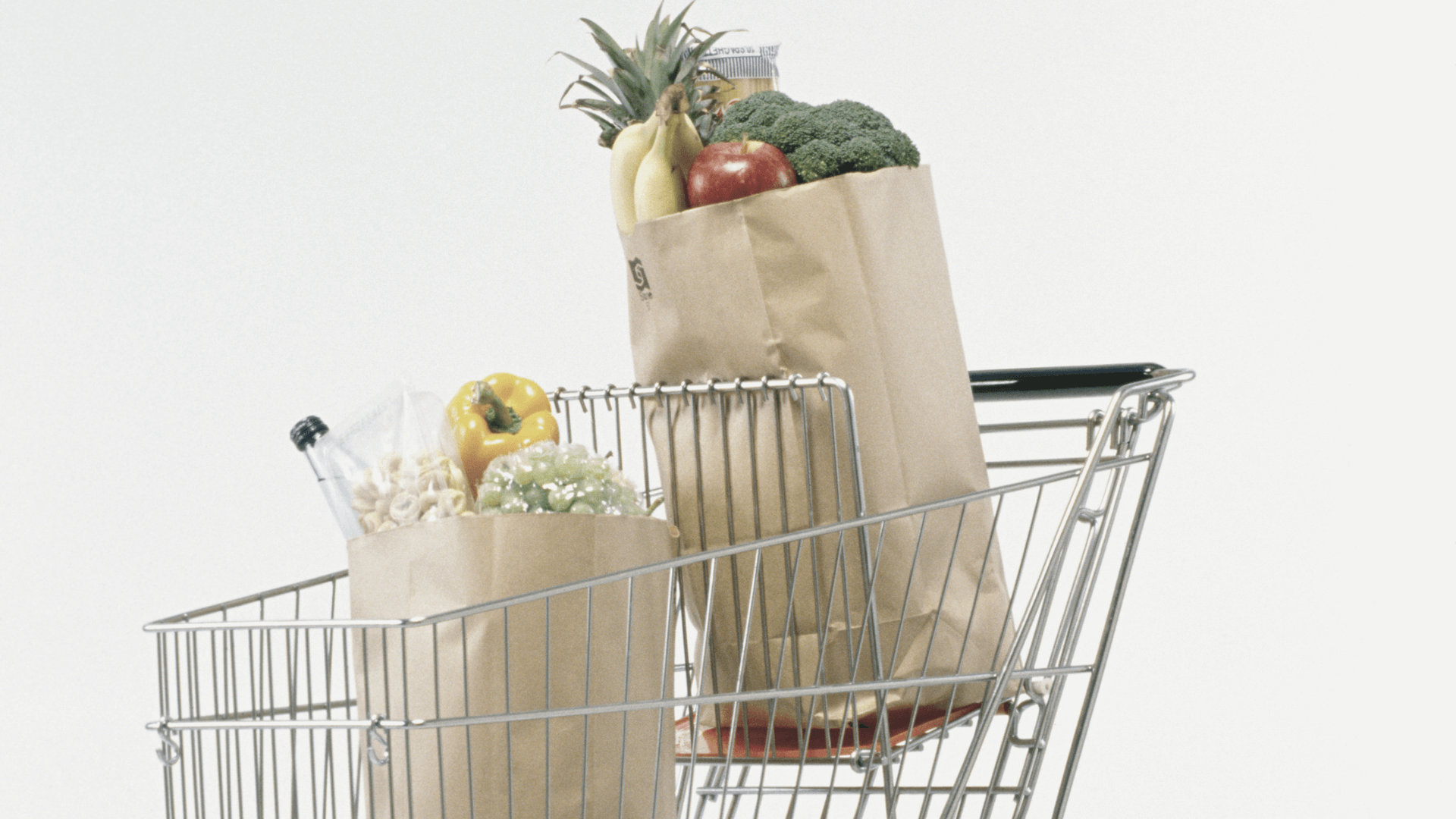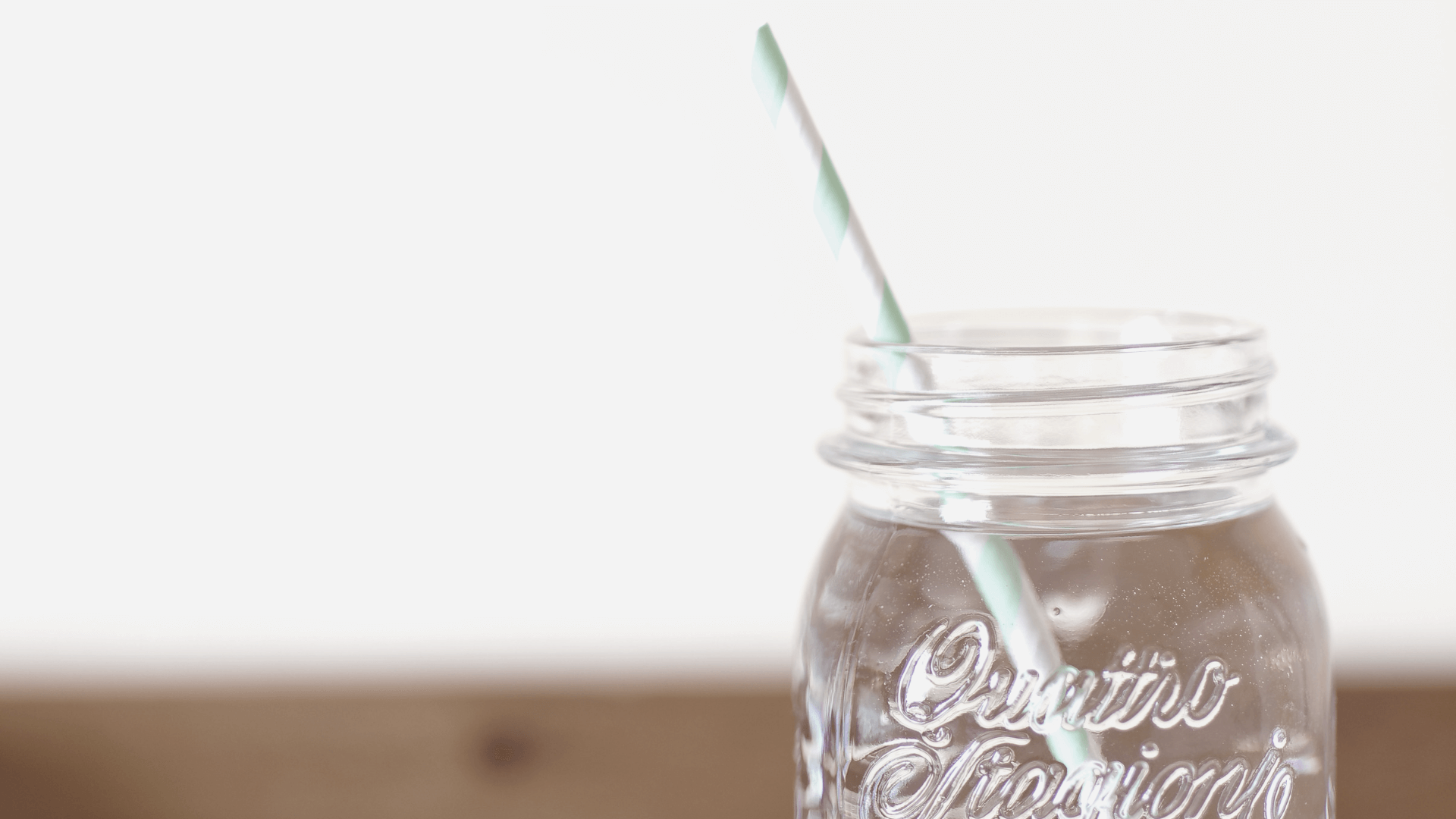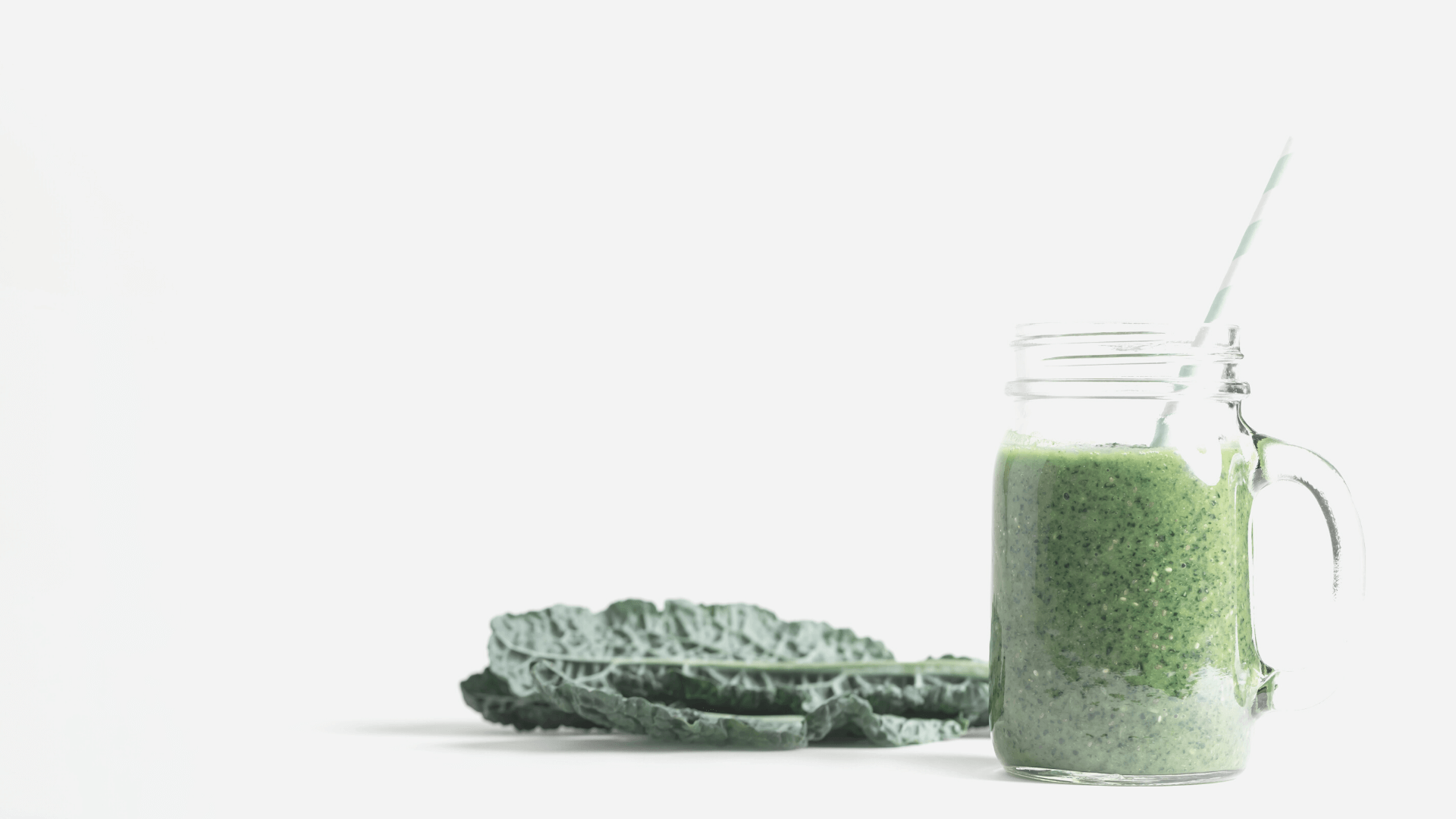So you’ve been diagnosed with Candida, but now you need your printable Candida diet food list that you can easily take to the grocery store.
I’m asked a lot about the candida infection because it’s becoming a quite common diagnosis.
I’ve written about candida in the past when comparing SIBO, SIFO, and Candida Overgrowth.
For your basic refresher:
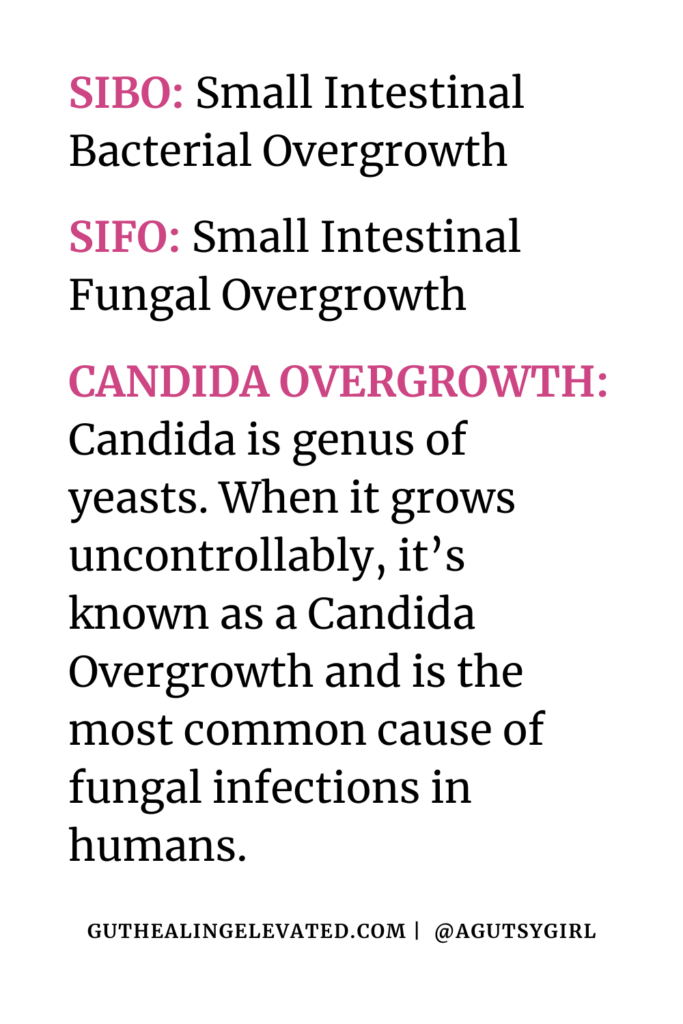
This post is strictly devoted to Candida and a candida diet plan to help you eat a healthy diet while trying to heal.
What is a Candida Overgrowth?
Candida refers to a category of yeasts that are typically found in small amounts in the mouth and gut flora and on the skin.
In smaller amounts, there is nothing wrong with Candida.
Healthy gut bacteria in the body keep Candida levels under control.
However, when the Candida grows uncontrollably, it’s known as a Candida Overgrowth (from the Candida albicans species of yeast; a yeast overgrowth) and is the most common cause of fungal infections in humans.
This can be problematic for two reasons:
- In those with an already compromised immune system.
- Having too much yeast breaks down the wall of the intestine and penetrates the bloodstream, releasing toxic byproducts into your body. This can cause the gut to become leaky.
I’ve written at length about Leaky Gut Syndrome. In fact, I have a book on it, too. If you’re interested in learning more about the topic, you can get started with it by reading How to Heal Leaky Gut Syndrome Fast.
What Exactly Is Candida albicans?
Candida albicans is the species of yeast that most commonly causes candidiasis infection. The overgrowth not only causes gut bacteria imbalances, but it can also result in conditions like oral thrush and vaginal yeast infections. (source)
Cleveland Clinic states this about Candida albicans,
Healthy bacteria in your body (microbiome) control the balance of Candida. Often when Candida is off-balance, the yeast overgrows and causes infection (candidiasis).
Side note: If you suffer from vaginal yeast infections, we love UT123 from Just Thrive Health.
Candida Causes, Signs and Symptoms
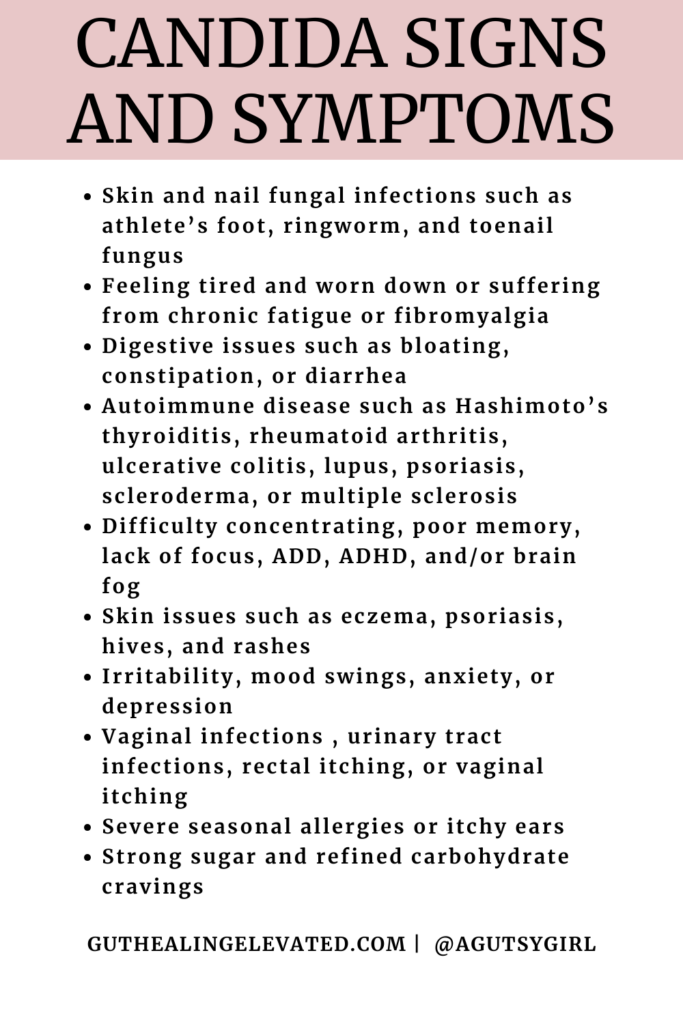
Here are the main candida overgrowth symptoms:
- Skin and nail fungal infections such as athlete’s foot, ringworm, and toenail fungus
- Feeling tired and worn down or suffering from chronic fatigue or fibromyalgia
- Digestive tract issues such as bloating, constipation, or diarrhea
- Autoimmune disease such as Hashimoto’s thyroiditis, rheumatoid arthritis, ulcerative colitis, lupus, psoriasis, scleroderma, or multiple sclerosis
- Difficulty concentrating, poor memory, lack of focus, ADD, ADHD, and/or brain fog
- Skin issues such as eczema, psoriasis, hives, and rashes
- Irritability, mood swings, anxiety, or depression
- Vaginal infections – recurrent vaginal yeast infections, urinary tract infections, rectal itching, or vaginal itching
- Severe seasonal allergies or itchy ears
- Strong sugar and refined carbohydrate cravings
For this post, I’m focusing on research that points to healing foods for a Candida yeast overgrowth.
Candida Diet Food List
First, it’s important to make note that…..
“A consistent antifungal diet of at least 5–6 weeks is also essential. It is important to deprive the yeast of their base food. Sugar, sweets, white flour products, and alcohol should be strictly avoided.
Sweet fruit should also be avoided in the first 4 weeks. The focus is on a wholesome diet with lots of lettuce, vegetables, and whole grain products. The high-fiber diet not only strengthens the immune system but also presumably exerts a mechanical cleaning effect by sweeping the fungal nests out of the villi through its fibrous structure and at the same time stimulating the bowel movement.
High-content phytochemicals with an antimicrobial effect make the whole-food diet the ideal antifungal diet—however, success is only permanent if there is a consequent change in diet.’
In the acute diet phase of 4 weeks, patients even have to do without sweet fruits because Candida can also utilize fructose. Only sour apples, lemons, and grapefruit are allowed.
The focus is on a high-fiber diet, which means a lot of salad and vegetables as well as whole grains. Their fiber exerts a mechanical “cleaning effect” by sweeping out the fungal nests between the villi, and they stimulate the movement of the intestine. In addition, fiber is cheap because it cannot be broken down by the yeast in the intestine. We therefore recommend our patients to eat whole foods.” (source)
In other words:
- Stop the candida growth by removing their base foods (sugar, added sugars, sweets, white flours, and alcohol).
- Even natural sweeteners, natural sugars, fruits, and fruit juices should be avoided.
- Whole foods are the focal point. These, though, are good things for overall health.
Taking this, and other things, into account here is a great list of foods for getting started today.
Printable Candida Diet Food List (take this grocery shopping!)
Click HERE to save this printable candida diet food list for an anti candida diet for later.
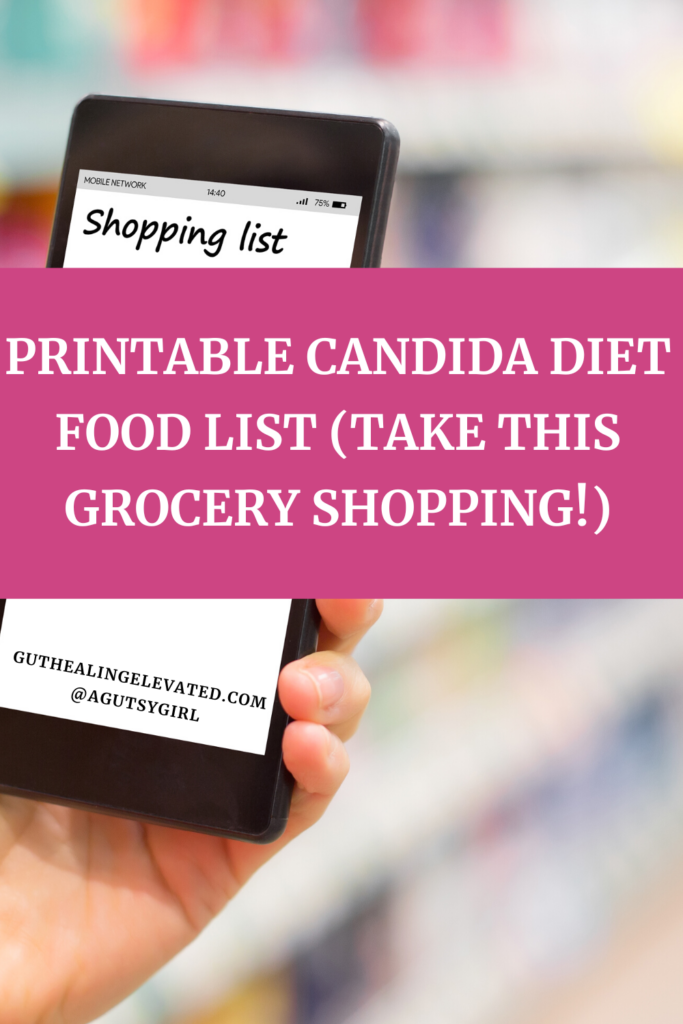
Note: this is not a definitive list of candida diet foods, but it will definitely be able to get you started. Then again, I don’t think there is such a thing as “definitive” because we are all so different.
I’ve also turned this into PDF format, and you can print this version HERE.
You can print out this candida diet shopping list and bring it right with you to the grocery store!
- Almonds
- Avocado and Avocado Oil (healthy fats in general)
- Basil
- Bone Broth (always a good idea for gut healing!)
- Chia Seeds
- Cilantro
- Cinnamon
- Cloves
- Coconut aminos
- Coconuts and Coconut Oil. (One study suggest that coconut oil could become the first dietary intervention to reduce GI colonization by C. albicans. Dietary coconut oil both reduced C. albicans murine GI colonization and altered the metabolic program of the colonizing cells.)
- Eggs
- Flaxseeds
- Garlic
- Ginger
- Ghee butter
- Grapefruit
- Hempseeds
- Lemon juice
- Low-sugar fruits (tomatoes and certain berries like strawberries, raspberries, and blueberries – in limited quantities)
- Olives and Olive Oil
- Oregano
- Organic meat (fresh, not packaged; ie. no hot dogs or deli meat) – p.s. HERE is the best place to buy grass-fed meat online)
- Parsley
- Turmeric
- Non-Starchy Vegetables (or low-starch vegetables):
- Alfalfa sprouts
- Arugula
- Artichoke
- Asparagus
- Beans (green, Italian, yellow or wax)
- Bok choy
- Broccoli
- Brussels sprouts
- Cabbage
- Cauliflower
- Celery
- Chayote (it’s a squash)
- Chicory
- Collard greens (leafy greens in general)
- Cucumber
- Dandelion greens
- Green onions
- Kale
- Leeks
- Lettuce (endive, escarole, romaine or iceberg)
- Mustard greens
- Okra
- Onions
- Peppers
- Radicchio
- Radishes
- Scallions
- Spinach
- Swiss chard
- Turnip greens
- Turnips
- Water chestnuts
- Watercress
- Zucchini
- Unsweetened non-dairy milk (choose varieties with just the nut + water i.e. Elmhurst 1925 has great options)
- Walnuts
- Wild salmon (wild-caught fish in general)
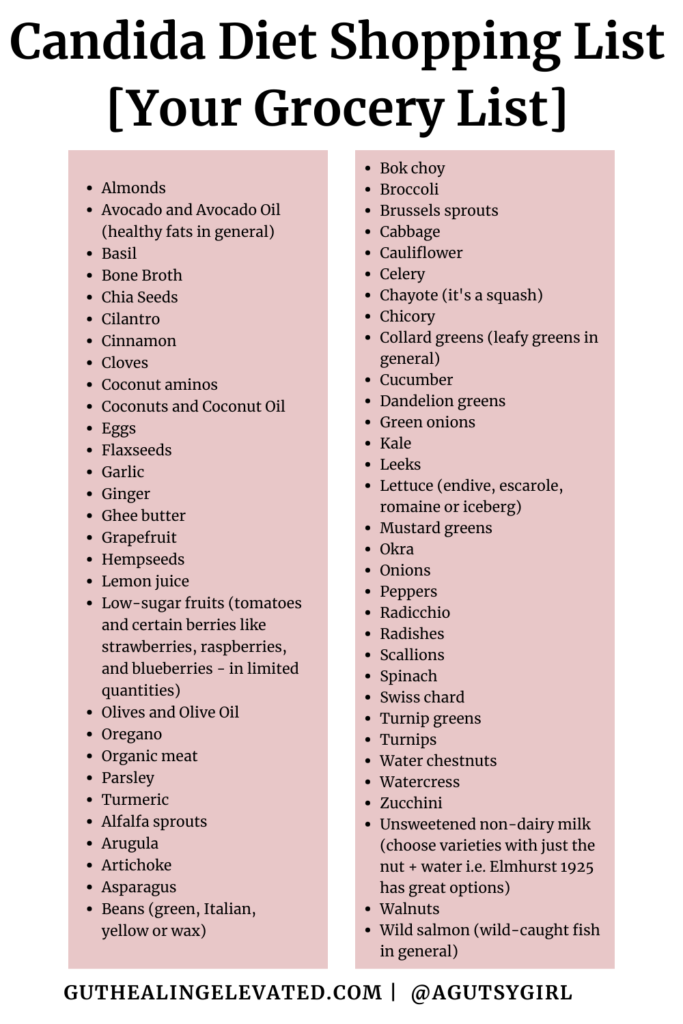
Foods to avoid on a Candida Diet
I think too often we focus on the “do not eat” list instead of “eat more of this.” We must figure out ways for eating more, not less.
Therefore, while I don’t want to focus on the foods to avoid on a Candida diet, I’ll share a basic list.
Exercise caution when approaching the following foods on any candida cleanse:
- high-sugar fruits (this would be most fruit, especially in the beginning; namely, mangoes, watermelon, grapes, cherries, pears, bananas, avocados, dates, raisins)
- gluten (this includes white flour and actually all 124 Wheat and Gluten Sources and Alternate Names) and grains (as long as they are gluten, dairy, yeast, and sugar-free)
- deli meats and farm-raised fish
- refined oils and fats
- condiments like balsamic vinegar and white wine vinegar + Worcestershire sauce and soy sauce
- certain dairy products like kefir, yogurt, buttermilk, sour cream
- sugar and artificial sweeteners (192 Sugar Sources and Alternate Names)
- nuts and seeds that are higher in mold (including peanuts and peanut butter, cashew, pecan, pistachio)
- caffeine
- gravy
- yeast, in general
- starchy vegetables like potatoes including sweet potatoes and yams, parsnips and arrowroot
- mushrooms
- alcohol (which, by the way is on almost every “NO” list for healing the gut and THIS is why)
- sugary beverages
- nitrates
- tempeh and tofu (fermented soybeans)
- tuna
- hot dogs
- sulfites
- heavily-processed foods (ice cream, candies, packaged goods)
- corn
If you’re consuming foods with live bacteria, i.e. fermented foods like Kombucha, sauerkraut, and pickles, they can be contributing to your overgrowth of candida. The recommendation is typically to remove them at least for 3-4 weeks.
However, sources do state that Organic Apple Cider Vinegar is okay to consume.
Apple cider vinegar showed antifungal properties against Candida spp., thus representing a possible therapeutic alternative for patients with denture stomatitis.
LEARN ALL ABOUT APPLE CIDER VINEGAR AND YOUR DIGESTIVE SYSTEM BY CLICKING HERE
And, in general (like with most other gut-healing diets), foods that are inflammatory and contain low nutrients should be avoided and/or limited as they are risk factors for an overgrowth of yeast.
Choose an anti-inflammatory diet every chance you get, as it’s the best way to approach diet from a high-level viewpoint.
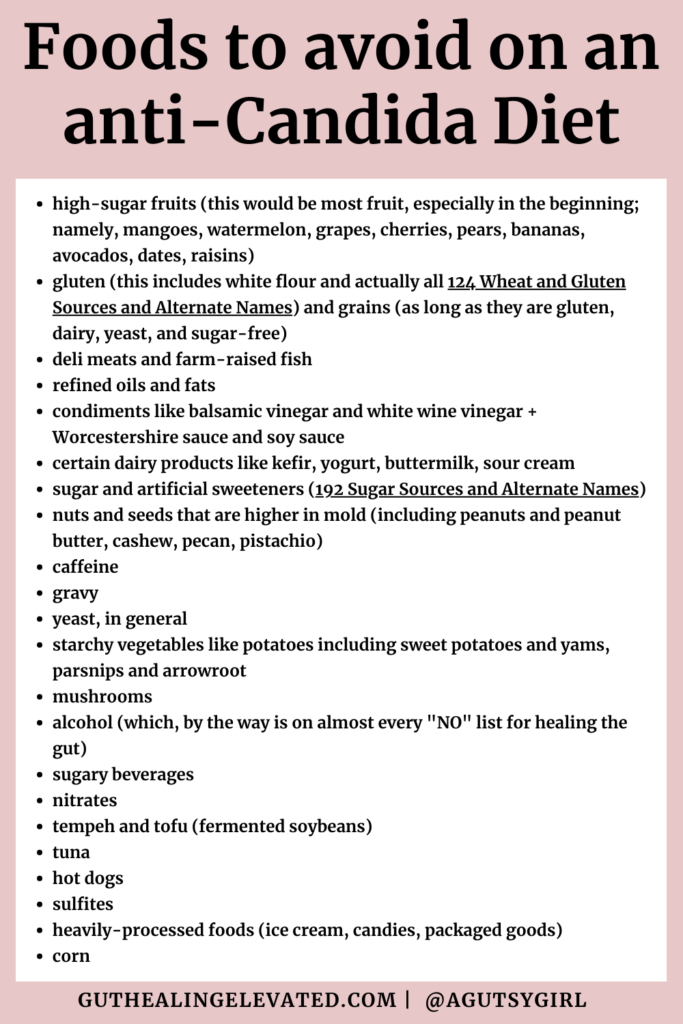
Can I Have Nutritional Yeast on a Candida Diet?
This is one of the top questions I’m asked when it comes to “can I have this for a Candida diet?”
Here is what the research says:
Stay Away from Nutritional Yeast with a Candida Overgrowth
Nutritional yeast, or “nooch”, is a dried, inactive form of a yeast called Saccharomyces cerevisiae. It looks like yellow fish flakes, and even though it’s high in B vitamins, it’s definitely not a superfood. Yeasts almost always contain high levels of mold toxins. They also encourage a yeast-like fungus called Candida albicans to grow in your body, which changes the fungal biome of your gut. (source)
Nutritional Yeast is fine for a Candida Overgrowth
Dr. Seymour Pomper, an expert in yeast explains that because nutritional yeast has not been associated with the Candida albicans strain related to yeast infections, it has proved to be one of the best remedies for chronic candida symptoms, a specific type of yeast infection. It has also shown profound effects on E.coli, salmonella and staphylococcus. (source)
In other words, you can find research on both sides of the coin.
So what do I personally think?
I think that whether or not Nutritional Yeast works for you will be 100% trial and error. Start slow and go, if you really want to try it. Don’t eat a ton at any given setting. See how you react to any dietary changes, record them in your food journal, and make the best decision for you.
Whatever you do, do not get caught up on Nutritional Yeast as the thing that will heal or not heal the overgrowth.
Sources: HERE, HERE, HERE, HERE, HERE, and HERE.
“Gray Area” Foods
There is no templated diet out there that is black and white when it comes to addressing a specific condition.
Candida overgrowth is no exception.
Gray area foods would be those where common sense should be considered. As with any other diet, there are the extremes (i.e. exist on meat and veggies only or follow no diet because “it will not help.”)
Diet is important when it comes to Candida, and if there is one thing you can do to help the overgrowth today, I might recommend to simply stay away from sugar and refine carbohydrates.
Besides that, if you’re keeping track of your food with my 28-day gut healing journaling system, this will be the BEST way to know which foods are working or not for you personally.
A Common Issue
Let’s say you are eating (or not eating) everything from above, but these things still linger:
- experience headaches
- digestive system off
- joint pain
- other problems in various parts of the body
I want you to remember something very important: you cannot diet harder.
Therefore, please remember to seek help from your healthcare provider.
You might have heavy metals exposure, other infections, low stomach acid, a hormone imbalance, blood sugar regulation problems, chronic stress, etc.
You can’t outrun a terrible diet, but the perfect diet might also not be the only thing you personally need.
Alright, now that you have an entire list of candida foods to enjoy and avoid, you can get started today.
Hoping to learn about many more digestive issues, symptoms you’re experiencing and how to get started healing? Then Gut Healing: ELEVATED is for you! In this comprehensive course, you’ll also receive my Candida 101 Guide. Learn all about it HERE.
If you liked this post on the Printable Candida Diet Food List, you might also enjoy:
- Quick Gut Detox
- Microbiome Diet Food List (Episode 84 with AndytheRD)
- L-Glutamine Dosage for Leaky Gut
Xox,
SKH
🤰 bloating be gone! weight loss through optimal gut health for women
💃ʜᴇᴀʟ ʏᴏᴜʀ ɢᴜᴛ. ʜᴇᴀʟ ʏᴏᴜʀ ʟɪfe.
🫶🏻 founder gutbyome.com

